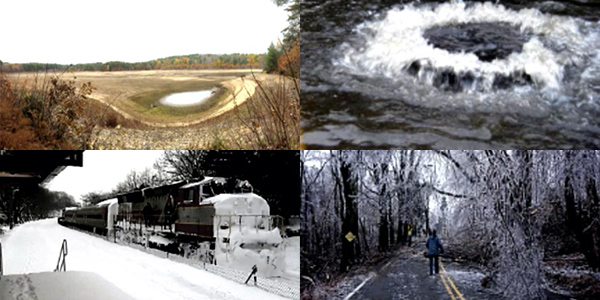The COVID-19 pandemic has roiled the clean energy industry and caused the loss of more than 600,000 related jobs nationwide, and the economic slowdown has also exacerbated social and environmental inequities.
The Northeast Clean Energy Council (NECEC) on Wednesday held the first in a series of webinars — called the Clean Energy Back to Work Challenge — which brought together a public official, an environmental advocate and a solar developer to explore how energy infrastructure and policy affect environmental justice and social welfare.
“As we know, clean energy is a key element to the economic recovery and the way out of the recession and economic challenges posed by COVID-19,” said Jeremy McDiarmid, vice president of policy and government affairs at NECEC. “We need to make sure that the recovery is just and equitable, and that traditionally disadvantaged populations are getting access to the benefits of clean energy while avoiding the environmental harms associated with fossil generation and pollution.”
Following is some of what we heard at the event.
Broad Goals, Public Policy

The clean energy industry now faces three key issues: the environmental justice question, social welfare needs and the intersection of those with public policy on new energy infrastructure, said Kathy Kelly, vice president of operations at Daymark Energy Advisors.
“We have very broad energy goals as a country around decarbonization and the adoption of clean energy and how that fits into our long-term plans,” Kelly said. “We need to make sure that as we do that, unlike the past, that all sectors of our society have access to clean energy and are treated equally as we implement the clean energy infrastructure.”
The disadvantages from energy development in the past hit poor people worst, which has lessons for overcoming the challenges of today, she said. For example, the housing stock in low-income areas is unable to accommodate renewable energy improvements, whether because of outdated wiring inside, or roofs unable to support solar panels.
It’s important not to repeat the mistakes of the past, said John Odell, director of energy and asset management for the city of Worcester, Mass.
Certain parts of the community bear more of the burden than others, which is why the city is developing a Green Worcester Plan to serve as a roadmap, he said.
“We want to get as much clean energy out there, remove as much waste from the waste stream, make sure our natural systems are enhanced as best we can and to do as much of that as fast as we can,” Odell said. “It’s often easier to do those things in areas that don’t have the disadvantages, so that’s where the issues of social equity come to the forefront. It’s easier to build on your strengths than it is to correct your weaknesses.”
Environmental Justice and Social Welfare

Health care accounts for more than 10% of greenhouse gas emissions nationally, but the sector also represents about 18% of GDP and is the largest employer in Massachusetts, said Eugenia Gibbons, Boston director of climate policy for Health Care Without Harm (HCWH), an international nonprofit organization with a network of more than 1,200 hospitals in the U.S.
“We employ about 500,000 people in the state and the sector also holds a significant amount of real estate across the commonwealth,” Gibbons said. “So when hospitals and hospital systems begin to implement climate strategies and try to address climate change in their own systems it’s actually having a huge impact on the surrounding communities and on the state as a whole.”
The pandemic has reinforced the link between air quality and poor health outcomes, which is now undeniable, she said. Low-income communities and communities of color have been proven more susceptible both to the virus and to the effects of climate change and air pollution.
“They have been ravaged by COVID,” Gibbons said. “We have to move away from the impulse to think about climate action as strictly an exercise in reducing GHG emissions, and really try to anchor the work in the communities and anchor the work around people.”
The pandemic has caused many disruptions to supply chains, and a combination of the coronavirus and recent protests against racial injustice across the U.S. has “forced a lot of organizations and businesses to have a come-to-Jesus moment and say, ‘We’re either prioritizing this or we’re not,’ and a lot of people are making those commitments,” Gibbons said. “It’s up to everyone to see that they follow through.”
Solar development, finance and construction is “pretty resilient,” said Jon Abe, CEO of solar finance firm Sunwealth, which backs small- and medium-size projects, especially in lower-income communities.
Early on in the pandemic, in many states, solar was deemed an essential service, so while it was complicated, it was relatively easy compared to other businesses to implement the appropriate safety measures at job sites, he said. Sunwealth has almost a dozen developers and installers in the field employing more than 100 electricians and installers at various sites across the U.S.
Sunwealth has been lobbying on low-income community solar inclusion in Massachusetts, where neither the administration nor the legislature has done enough, Abe said.






